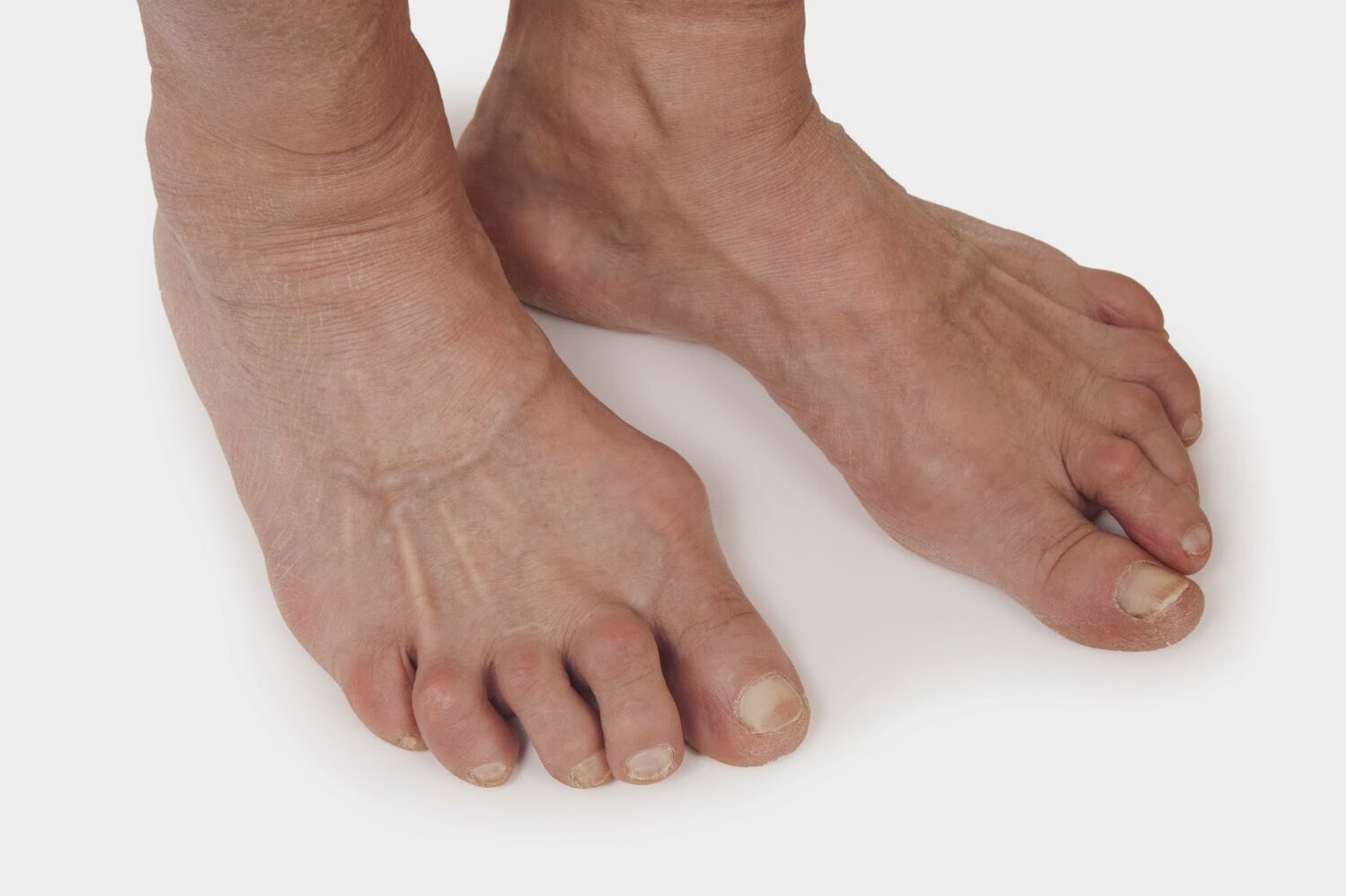Rheumatoid Arthritis
The Highlights
Rheumatoid Arthritis (RA) is an auto-immune condition causing chronic inflammation throughout the body but most well known for affecting the small joints of the feet and hands.
Our advanced practice offers in-house diagnostic ultrasound which can support you in getting to a diagnosis (and therefore treatment) of RA much sooner.
In both newly diagnosed and long-standing cases of RA, we can help you manage symptoms through various treatments including footwear advice, foot orthoses (specialist insoles), management of skin problems due to foot deformity and steroid injections during joint flare-ups.
What is it and what are the symptoms?
RA is a long-term (chronic) autoimmune condition that causes inflammation in multiple connective tissues throughout the body - the most common being joints and of these, the most common being hands, wrists and feet although joint, in principle, can be affected.
Because RA can affect multiple systems in the body, there is a long list of potential symptoms and these will also be influence by how long you have had the condition, the medications you are on for it and it's severity which is influenced in part by what subtype of the condition you have - the two broad categories being "sero-negative" and "sero-positive" - the latter usually being the more challenging to manage.
Joint pain, swelling and stiffness (especially in the mornings) are common and, as mentioned, tend to affect the smaller joints of the hands and feet first. The metatarsal phalangeal joints and inter-phalangeal joint (the toe joints) are most commonly affected in the foot and pain across the ball of the foot is a common as a result. These symptoms are also usually symmetrical (both hands / both feet will often be problematic at similar times). Soft tissues like tendons and bursa (fluid filled sacs located around the body) can also be inflamed and painful. In time, without good drug-management, these symptoms may worsen leading larger, misaligned joints, nodules in the skin and thickening of tendons.
RA is also a condition that goes through "flares" - you can have periods of feeling quite well for months on end and then quite suddenly experience a severe spike in symptoms, not always with an obvious trigger.
Why does it happen?
People with certain genes (HLA-DR1 and HLA-DR4) are more susceptible developing RA A family history also greatly increases your odds of developing this condition. Environmental factors are also known to play a role - smoking is a well-documented trigger for rheumatoid arthritis and certain infections may also initiate RA.
There is a long and complex cascade of cellular processes that trigger and develop the disease processes of RA but the extremely shortened version is this: certain proteins in connective tissues like collagen and swapped around, these are misunderstood by immune cells as being foreign. These immune cells then essentially "sound the alarm" to other immune cells in the body which flood the joint with inflammatory substances can force the synovial membrane which lines the joint to swell and thicken as well as releasing it's own substances which join in to degrade cartilage, neighbouring soft tissues and eventually bone.
Similar such viscous cycles can occur in other body systems like blood vessels (causing vasculitis), skin (forming rheumatoid nodules), muscle (causing protein breakdown) and even the brain (causing rheumatic fever).
What are the treatment options?
We are incredibly fortunate in the UK that patients with RA will usually have good access to their local rheumatology department including rheumatology consultants, nurses and potentially physiotherapy and podiatry input. We are also incredibly fortunate to have all manner of advances in medication to treat RA and keep the condition under good control and this is usually started early the disease process. As such, in Podiatry clinics we now see fewer and fewer patients with the more advances foot complications associated with RA like significant joint deformities and nodules.
As the Scottish Borders' only Podiatry clinic to offer in-house diagnostic ultrasound, we see a big part of our role here as helping to monitor patients with known RA and, on occasion, we are also the first to pick up this condition and can help lead to a faster referral to rheumatology and ultimately faster therapy. Ultrasound is very helpful here as it is able to detect synovitis (increased blood flow within joints) as well as increased blood flow in soft tissues which can be a useful early indicators (much earlier than X-rays) for inflammatory conditions like RA. We have also seen plenty examples of patients diagnosed with a mechanical joint or tendon problem elsewhere only for our ultrasound investigations to discover they instead were experiencing an inflammatory condition.
When foot complications do occur, we can play an important role in improving foot function and comfort; we can provide routine management of corn and calluses that may develop at high-pressure area. Footwear advice is often important and custom-made foot orthoses (specialist insoles) can be very helpful in offloading high-pressure areas as well. During acute "flares" in symptoms, we can also offer corticosteroid injections which are a highly effective treatment for RA and are considered a good strategy to halt an inflammatory flare before it inflicts joint/tendon/bursa damage that cannot be undone. Combined with our clinic's ability to recognise joint flares on ultrasound, our success rates with these injections are very high.




